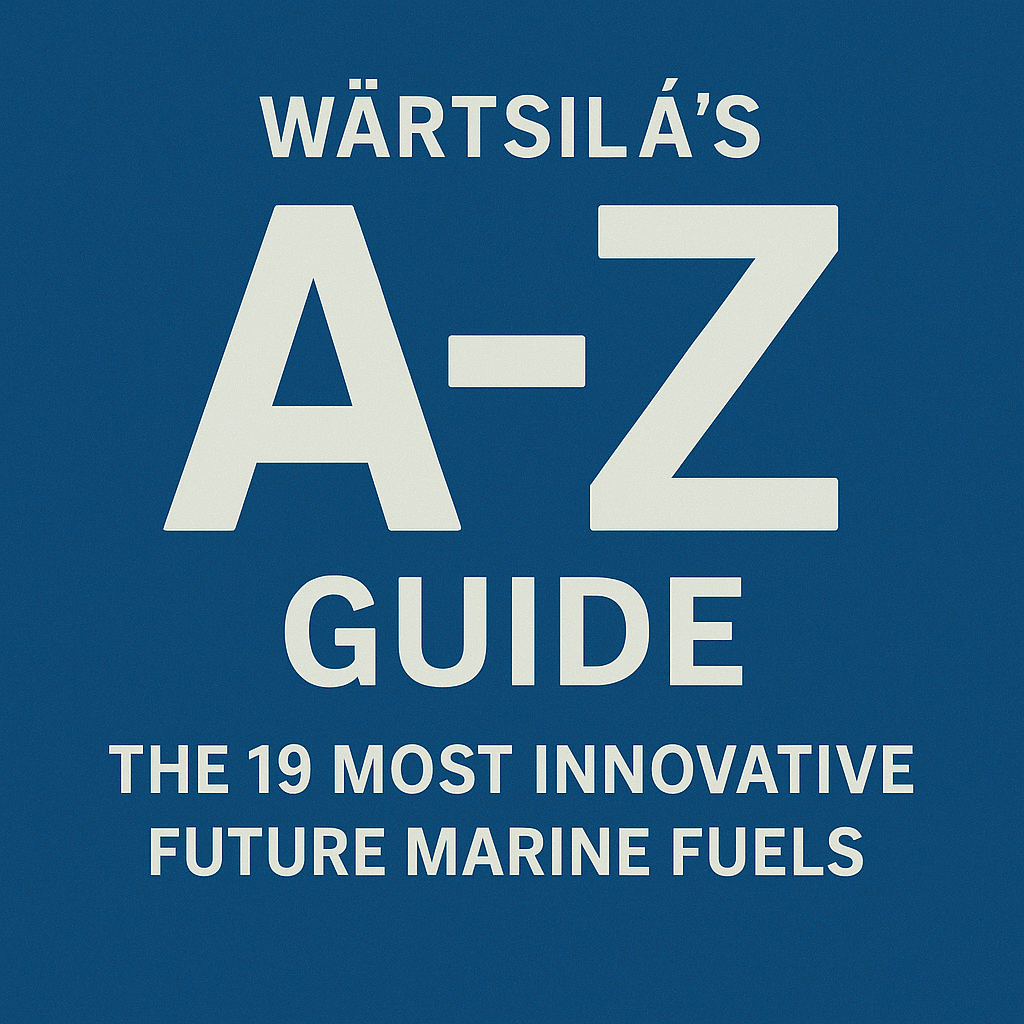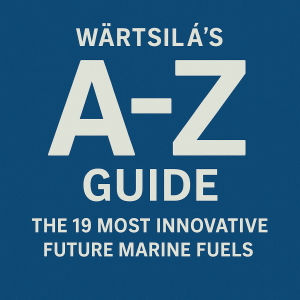Explore Wärtsilä’s A–Z Guide on the 19 most innovative marine fuels—from ammonia to eFuels—and discover real-world progress, benefits, and the future of cleaner shipping.
Shipping powers 90 % of global trade—but also contributes around 3 % of greenhouse gas emissions. As the industry sails toward the IMO’s 2050 emissions reduction goals, Wärtsilä’s A–Z Guide of “19 best picks” for future marine fuel technology shines a lighthouse on how vessel owners can navigate this transition.
Why this Guide Matters for Modern Maritime Operations
Shipping professionals, from students to industry leaders, must understand the broad spectrum of alternative fuels emerging on the horizon. Wärtsilä’s Guide distills complex technologies—from biofuels to synthetic eFuels—into an insightful roadmap toward greener oceans. This guide isn’t just alphabet soup—it outlines tangible options, their benefits, and fuel-flexible paths forward.
In-Depth Analysis of the Key Fuel Options
Ammonia
Ammonia emits no CO₂ during combustion and, when produced via renewable hydrogen, can be truly carbon-free. Wärtsilä has advanced ammonia-capable engines to a mature stage but warns of safety and storage challenges onboard.
Real-world: Wärtsilä is retrofitting the platform supply vessel Viking Energy to run on ammonia—set to be the world’s first in-service ammonia-fuelled PSV by mid-2026, with over 70 % GHG reduction compared to diesel.
Biofuels
Biofuels are derived from biomass like vegetable oils and waste, available in liquid and gaseous forms. These fuels reduce reliance on fossil fuels but vary in emissions depending on feedstock.
Hydrogen
Hydrogen is a clean option with zero carbon when used, but only when produced renewably. Wärtsilä has developed hydrogen engines and blends, such as natural gas mixed with hydrogen.
Conversion
Wärtsilä emphasizes retrofitting existing vessels (conversion) to accept future fuels, avoiding stranded assets and gaining flexibility.
Methanol
Methanol is a simple alcohol already in use for plastics. It is biodegradable and offers immediate emission reductions. Wärtsilä’s methanol engines entered the market in 2022 and support carbon-neutral goals when using renewable methanol.
NOₓ Management
Nitrogen oxides (NOₓ) can be managed using technologies like Wärtsilä’s NOₓ Reducer (NOR). For instance, LNG reduces NOₓ by 20–80 %, while some biofuels may increase NOₓ emissions.
Poseidon Principles
This is a framework adopted by banks to assess and share carbon footprints of ship finance portfolios. Eco-friendly vessels may benefit from preferential financing.
Quick Guides
Wärtsilä offers concise guides for various fuels—ammonia, ethanol, biodiesel, biomethane, methanol—to help stakeholders understand options quickly.
Renewable vs. Synthetic Fuels
Renewable fuels come from sustainable resources like biomass or renewable electricity. Synthetic fuels (eFuels) are produced via Power-to-X technologies, using CO₂ and green hydrogen to create carbon-neutral options.
Volumetric Energy Density
This refers to energy per volume. Ammonia, for example, has lower density than LNG, meaning larger tanks are needed.
Wärtsilä Methanol Engines
Wärtsilä’s methanol engines are purpose-built and integrated with MethanolPac supply systems, ensuring efficient and safe carbon-neutral operations when based on renewable methanol.
ZEEDS Initiative
Zero Emission Energy Distribution at Sea (ZEEDS) is a collaboration including Wärtsilä. It aims to build fuel hubs powered by offshore wind turbines to produce hydrogen and ammonia, first modelled for the North Sea and Baltic region.
Challenges and Solutions on the Horizon
-
Safety & Infrastructure: Fuels like ammonia and hydrogen pose storage and safety challenges onboard. Solutions include robust engine designs and hub-based fuel systems such as ZEEDS.
-
Energy Density & Space: Some fuels require more storage volume, impacting vessel design and cargo space.
-
Retrofit Pathways: Wärtsilä’s Fit4Fuels platform allows two-stroke diesel engines to be converted to future fuels—with rapid payback, efficiency retention, extended operational life, and lower methane slip.
Future Outlook
Wärtsilä’s roadmap is phased: starting with biofuels, transitioning to blue fuels (fossil with carbon capture), and ultimately reaching green synthetic fuels by 2050. Investments in technology development, such as dual-fuel engines and hydrogen readiness, position Wärtsilä at the vanguard of maritime decarbonization.
Real-World Applications & Case Studies
-
Viking Energy PSV: The first ammonia-fuelled platform supply vessel, set for mid-2026 launch with approximately 70 % GHG reduction.
-
Methanol Engines: Introduced in 2022, offering flexible multi-fuel capability tied to MethanolPac systems.
-
Fit4Fuels Retrofit: Retrofitting a 10k–13k TEU container ship yields CO₂ reduction of about 21,000 tons per year with a payback period under four years.
FAQ
What makes ammonia fuel promising for ships?
Because it burns without CO₂ emissions and can be carbon-free if produced renewably. Wärtsilä has already deployed engines and will debut the first ammonia PSV in 2026.
How do methanol engines fit in?
Wärtsilä’s dedicated methanol engines provide near-carbon-neutral alternatives when using renewable methanol and are already in commercial use since 2022.
Are synthetic eFuels viable?
Yes. Using Power-to-X technologies, eFuels can be produced from CO₂ and renewable hydrogen, offering a fully carbon-neutral path. Large-scale adoption, however, requires expansion of global renewable infrastructure.
How can legacy ships transition?
Wärtsilä’s Fit4Fuels system enables fast retrofits with high return on investment, while also ensuring compliance with future emissions regulations.
Will low-volumetric fuels compromise cargo operations?
Some fuels, like ammonia, need larger tanks, which may challenge cargo space. Careful design and advanced planning are essential.
Conclusion
Wärtsilä’s A–Z Guide lays out a human-centred, expert-led roadmap for decarbonizing marine propulsion. From ammonia to eFuels, it equips professionals with clarity, choices, and timelines. With real-world breakthroughs like methanol engines, hydrogen power, and the world’s first ammonia PSV, Wärtsilä is propelling the shipping industry toward a cleaner, flexible, and sustainable future.
As decision-makers, students or enthusiasts, let this guide chart your course—and consider retrofits, diversification, and collaboration to ensure your fleet remains future-ready in the race to net-zero.


